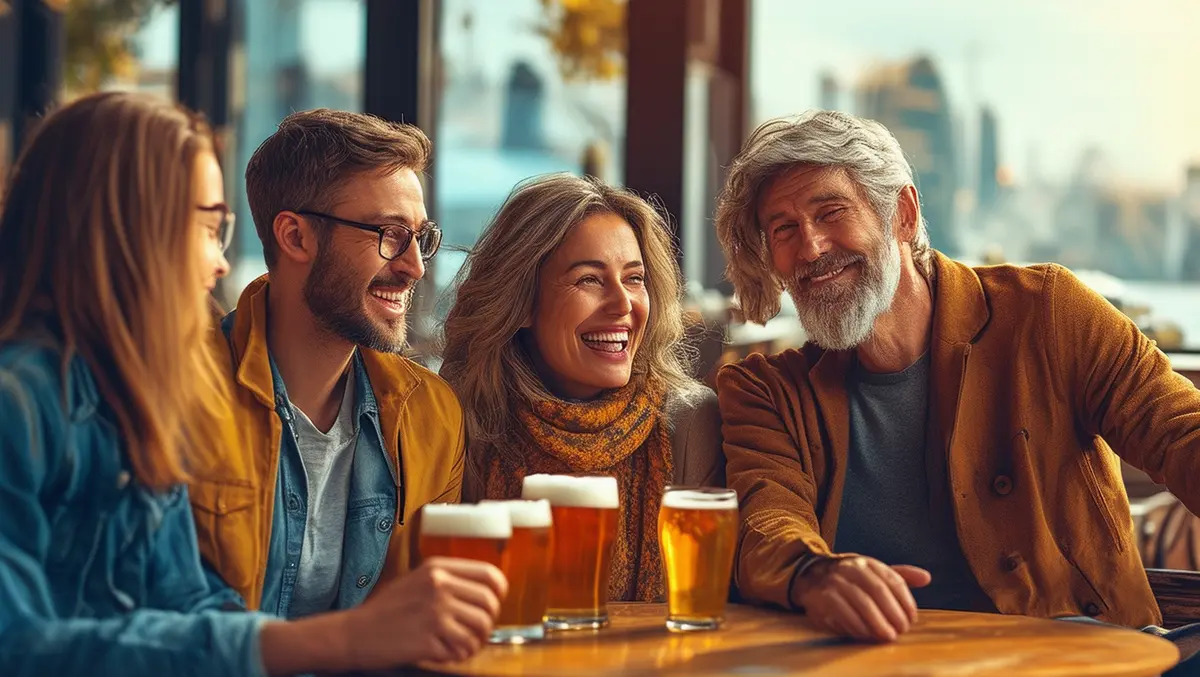
How AI portrays generations: beer is the common link
New research conducted by AIport and Turing Post has delved into how different generative AI models perceive and depict generational groups.
The study analysed more than 1200 AI-generated images from four prominent models—Stable Diffusion, Midjourney, YandexART, and ERNIE-ViLG—shedding light on the visual representation of Baby Boomers, Gen X, Millennials, and Gen Z.
This joint research project offers a glimpse into how AI interprets generational identities, revealing both enduring stereotypes and surprising elements. Boomers, for instance, are often depicted as reflective or even melancholic.
According to the study, Midjourney portrays nearly 80% of Boomers as somber, with images frequently showing them in pensive poses, bundled up, and gazing wistfully into the distance. This representation contrasts with the ERNIE-ViLG model, where over 90% of Boomers appear smiling. These differences highlight the influence of AI training datasets on visual output.
While Boomers are stereotypically seen as conservative and nostalgic, the younger generations, particularly Gen Z and Millennials, are shown to be vibrant and diverse. AI models often depict Zoomers in dynamic, highly detailed scenarios that emphasize cultural diversity. This aligns with the characteristics of India's younger population, who are globally connected and value representation.
Millennials, usually stereotyped as job-hopping individuals or avocado toast enthusiasts, are depicted with a broader acceptance of diversity across all AI models. The research indicates an interesting convergence of cultural identities, suggesting that Indian Millennials and Gen Z are part of a larger, global narrative.
One of the most unexpected findings from the research is the presence of beer as a common element across all generational depictions. Whether it was Boomers or Gen Z, images consistently featured beer, highlighting it as a surprising cross-generational connection. This inclusion suggests that some habits transcend age and cultural boundaries, even if they don't necessarily align with Indian drinking patterns.
The study employed neutral prompts such as "a Millennial at work" or "a Boomer relaxing" to avoid introducing bias into the AI models. This approach aimed to provide a clear view of societal expectations and how they are mirrored in AI outputs. The stark contrasts, particularly in the representation of Boomers, demonstrate the regional and cultural influences on AI-generated images.
Hon. Lisa Sparks, Ph.D., Founding Dean, School of Communication, McGaw Endowed Professor in Behavioural Sciences, Chapman University, remarked on the implications of these findings. "These images offer a new lens through which to explore how AI interprets generational identity. For an Indian audience, this opens up discussions about how global AI models understand cultural identity and the extent to which their interpretations reflect our values or biases."
The study took into account the outputs of four globally recognised generative AI models, each characterised by distinct aesthetic and cultural nuances. By analysing the images generated by Stable Diffusion, Midjourney, YandexART, and ERNIE-ViLG, the research offers a comprehensive look at generational portrayals from different regions around the world.
AI-generated images serve as an intriguing window into technological interpretations of generational differences, both globally and locally. Although familiar stereotypes such as reflective Boomers and vibrant Gen Z are present, the shared depiction of beer across all generations highlights a unique cross-generational connection in AI's visual representation of the world.


